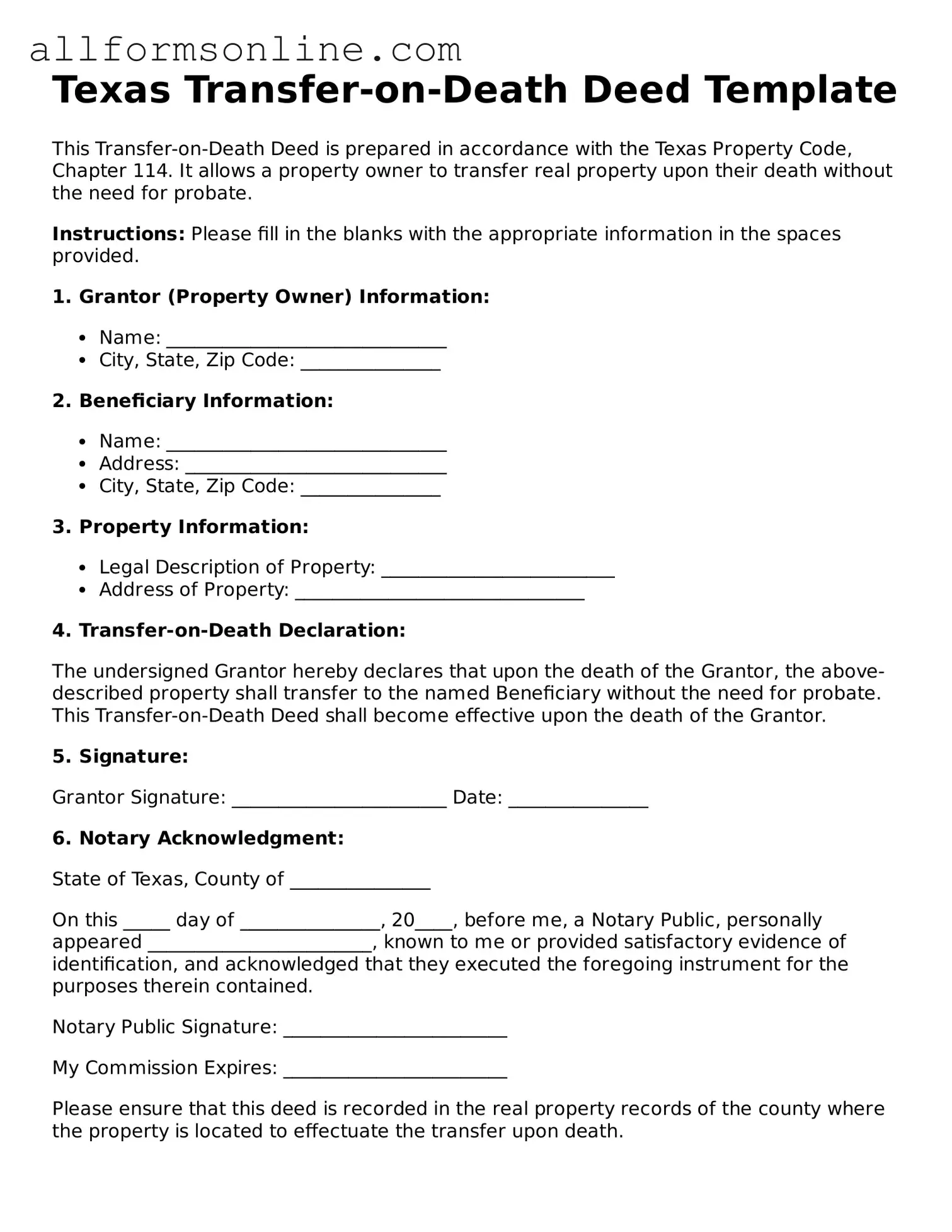What is a Transfer-on-Death Deed in Texas?
A Transfer-on-Death Deed (TODD) is a legal document that allows a property owner in Texas to designate a beneficiary who will receive the property upon the owner’s death. This deed enables the transfer of real estate without the need for probate, simplifying the process for heirs and ensuring that the property passes directly to them.
Who can use a Transfer-on-Death Deed?
Any individual who owns real property in Texas can utilize a Transfer-on-Death Deed. This includes single owners, married couples, and individuals who own property in a trust. However, it is important to ensure that the deed is executed properly to be valid.
How do I create a Transfer-on-Death Deed?
To create a Transfer-on-Death Deed, the property owner must fill out the appropriate form, which includes information about the property and the designated beneficiary. The owner must then sign the deed in front of a notary public. After that, the deed must be recorded in the county where the property is located to be effective.
Can I change or revoke a Transfer-on-Death Deed?
Yes, a Transfer-on-Death Deed can be changed or revoked at any time before the owner’s death. To do this, the owner must execute a new deed or a revocation form and ensure it is properly recorded. It is advisable to consult with a legal professional to ensure that the changes are valid and recorded correctly.
What happens if the beneficiary predeceases the property owner?
If the designated beneficiary passes away before the property owner, the Transfer-on-Death Deed becomes ineffective regarding that beneficiary. The property owner may then choose to designate a new beneficiary or decide to let the property pass according to their will or Texas intestacy laws if there is no will.
Are there any tax implications with a Transfer-on-Death Deed?
Generally, there are no immediate tax implications when creating a Transfer-on-Death Deed. However, the property may be subject to estate taxes upon the owner's death, and the beneficiary may face property taxes once they inherit the property. It is recommended to consult a tax advisor for specific guidance.
Is a Transfer-on-Death Deed the same as a will?
No, a Transfer-on-Death Deed is not the same as a will. While both documents deal with the transfer of property upon death, a TODD allows for direct transfer of property without going through probate. A will, on the other hand, must be validated in probate court, which can be a lengthy process.
Can a Transfer-on-Death Deed be used for all types of property?
A Transfer-on-Death Deed can only be used for real estate, such as residential or commercial property. It cannot be used for personal property, bank accounts, or other assets. For those types of assets, different estate planning tools may be necessary.
